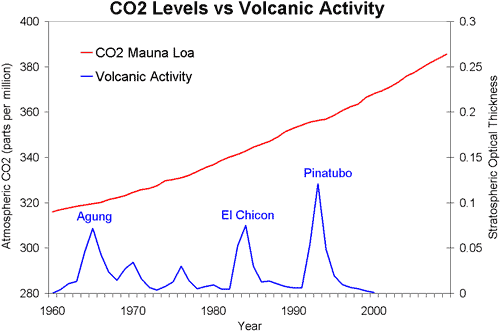 Arguments
Arguments
 Software
Software
 Resources
Comments
Resources
Comments
 The Consensus Project
The Consensus Project
 Translations
Translations
 About
Support
About
Support


Latest Posts
- Keep it in the ground?
- 2026 SkS Weekly Climate Change & Global Warming News Roundup #03
- Skeptical Science New Research for Week #3 2026
- Climate Adam - Will 2026 Be The Hottest Year Ever Recorded?
- Fact brief - Does clearing trees for solar panels release more CO2 than the solar panels would prevent?
- Where things stand on climate change in 2026
- 2026 SkS Weekly Climate Change & Global Warming News Roundup #02
- Skeptical Science New Research for Week #2 2026
- UK renewables enjoy record year in 2025 – but gas power still rises
- Six climate stories that inspired us in 2025
- How to steer EVs towards the road of ‘mass adoption’
- 2026 SkS Weekly Climate Change & Global Warming News Roundup #01
- Skeptical Science New Research for Week #1 2026
- 2025 in review - busy in the boiler room
- Direct Air Capture
- IEA: Declining coal demand in China set to outweigh Trump’s pro-coal policies
- 2025 SkS Weekly Climate Change & Global Warming News Roundup #52
- Skeptical Science New Research for Week #52 2025
- How climate change broke the Pacific Northwest’s plumbing
- Fact brief - Do solar panels generate more waste than fossil fuels?
- Zeke's 2026 and 2027 global temperature forecasts
- 2025 SkS Weekly Climate Change & Global Warming News Roundup #51
- Skeptical Science New Research for Week #51 2025
- What are the causes of recent record-high global temperatures?
- Fact brief - Are toxic heavy metals from solar panels posing a threat to human health?
- Emergence vs Detection & Attribution
- 2025 SkS Weekly Climate Change & Global Warming News Roundup #50
- Skeptical Science New Research for Week #50 2025
- The rest of the world is lapping the U.S. in the EV race
- Fact brief - Are electromagnetic fields from solar farms harmful to human health?
Archived Rebuttal
This is the archived Intermediate rebuttal to the climate myth "Volcanoes emit more CO2 than humans". Click here to view the latest rebuttal.
What the science says...
|
Volcanoes emit around 0.3 billion tonnes of CO2 per year. This is about 1% of human CO2 emissions which is around 29 billion tonnes per year. |
Volcanoes emit CO2 both on land and underwater. Underwater volcanoes emit between 66 to 97 million tonnes of CO2 per year. However, this is balanced by the carbon sink provided by newly formed ocean floor lava. Consequently, underwater volcanoes have little effect on atmospheric CO2 levels. The greater contribution comes from subaerial volcanoes (subaerial means "under the air", referring to land volcanoes). Subaerial volcanoes are estimated to emit 242 million tonnes of CO2 per year (Mörner and Etiope (2002)).
In contrast, humans are currently emitting around 29 billion tonnes of CO2 per year (EIA). Human CO2 emissions are over 100 times greater than volcanic CO2 emissions. This is apparent when comparing atmospheric CO2 levels to volcanic activity since 1960. Even strong volcanic eruptions such as Pinatubo, El Chicon and Agung had little discernable impact on CO2 levels. In fact, the rate of change of CO2 levels actually drops slightly after a volcanic eruption, possibly due to the cooling effect of aerosols.

Figure 1: Atmospheric CO2 levels measured at Mauna Loa, Hawaii (NOAA) and Stratospheric Aerosol Optical Thickness at 50nm (NASA GISS).
The Mount Pinatubo eruption emitted 42 million tonnes of CO2 (Gerlach et al 1996). Compare this to human emissions in 1991: 23 billion tonnes of CO2 (CDIAC). The strongest eruption over the last half-century amounted to 0.2% of human CO2 emissions in that year.
Intermediate rebuttal written by John Cook
Update July 2015:
Here is the relevant lecture-video from Denial101x - Making Sense of Climate Science Denial
Updated on 2015-07-06 by skeptickev.
THE ESCALATOR

(free to republish)
























































